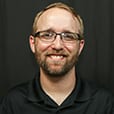
CONCORD, N.C. — It’s been an interesting few months to say the least.
With COVID-19 drastically changing how we, as a society, interact with one another, the motorsports world has been forced to adapt to the ever-changing atmosphere. Social distancing has become the norm and wearing a face mask is more common than anyone expected.
Slowly but surely, motorsports began to return during the month of May, with the majority of events being run without fans. The World of Outlaws NOS Energy Drink Sprint Car Series raced at Knoxville (Iowa) Raceway with no fans in the stands.
NASCAR hit the track in mid-May, sanctioning seven events at Darlington (S.C.) Raceway and North Carolina’s Charlotte Motor Speedway during a two-week period.
I had the pleasure of attending one of those events, the NASCAR Xfinity Series Alsco 300 at Charlotte Motor Speedway on May 25. I was one of two journalists selected by the membership of the National Motorsports Press Ass’n to attend that particular event.
Through June 21, NASCAR restricted the media to four print journalists at each event. One of those was a writer from the Associated Press, two were selected by the NMPA and the fourth was a local journalist selected by NASCAR.
The process I followed in order to attend the Alsco 300 was surprisingly simple. I filled out several forms and a medical questionnaire 24 hours before the event. The questionnaire focused mainly on my potential contact with anyone diagnosed with COVID-19.
On the day of the event, I first picked up my credential. Before I even arrived to do that, I had to put on a face mask. Everyone on the property was required to wear a mask at all times.
Unlike the typical NASCAR credential that usually says hot or cold — hot if you’re allowed in the pits and garage when the engines are fired and cold if you’re not — the credential I received simply said: “Essential.”
Upon receiving my credential, I went through a police checkpoint before arriving at the medical screening. I provided my name, displayed my credential and they checked my temperature with a hand-held thermometer. Once my temperature was deemed appropriate, I was given a big purple sticker with the letter “E” on it, which went on my credential to confirm I’d passed the medical screening station.
A few more security checkpoints followed before I parked at Smith Tower in front of Charlotte Motor Speedway and walked to the press box elevator.
Typically, I work from the infield media center, which provides better access to the drivers and race teams. However, due to NASCAR’s current COVID-19 policies, the four journalists selected to work the event were stationed in the press box.
Upon arrival in the press box, I was greeted by Charlotte Motor Speedway Vice President of Communications Scott Cooper, who directed me to my seat. There was plenty of room in the press box for the four journalists plus a few CMS staffers, with all of us separated from each other.
What truly sticks out about this experience, however, was the lack of fans in the grandstands. It was odd to see the grandstands completely empty as race cars circled the 1.5-mile superspeedway. It was an experience I won’t soon forget.
The race was won by Kyle Busch, who passed Austin Cindric on the last lap. It was a great finish to an entertaining race, but it was disappointing no one was there to see it.
The current atmosphere isn’t ideal for anyone. Journalists and photographers want to be at the race track, bringing stories to our readers and website visitors who yearn for a sense of normalcy.
Unfortunately, at least for NASCAR racing, it’s probably going to be awhile before normal returns.
Meanwhile, we suggest supporting as many local short tracks as possible. There are several around the country that are returning to competition, with some allowing fans to attend in limited or full capacities.
Two days prior to visiting Charlotte Motor Speedway, I trekked at Cherokee Speedway in Gaffney, S.C., for a Short Track Super Series modified event. Fans filled the stands and the racing was fantastic. It truly felt like a normal day at the races.
It wasn’t all normal, though, as I had my temperature checked before I entered the pit area, but that’s probably for the best, at least for now. Unlike the NASCAR race at Charlotte, there were very few people wearing masks at Cherokee.
Perhaps it was because it was hot and humid, perhaps it was because everyone was already tired of wearing masks, but it made me a little uncomfortable. I wore my mask throughout the night and being able to be at the track made it worth it.
If you don’t feel comfortable going to a race track now, there are plenty of online streaming options to view racing. Make sure you visit speedsport.tv to check out all of our archived content and to see what live racing action is taking place each weekend.
It’s not ideal, but a little racing is better than no racing.
